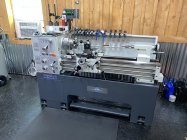You can dial anything in radially at a single point and with a drill, bore, ream process the chamber should be both radially centered and axially aligned with the spindle. Runout in the chamber shouldn’t be affected by that choice, you can get no runout bushing or spider.. If the chamber has runout something else is wrong.
With the bushing however, you only get a single point of radial runout to align, you have no control over the axial alignment of the bore ahead of that single point to make sure that your nice chamber isn’t pointed cockeyed to the bore axis.
Runout isn’t really the metric to consider, it should be nil either way.
With the bushing however, you only get a single point of radial runout to align, you have no control over the axial alignment of the bore ahead of that single point to make sure that your nice chamber isn’t pointed cockeyed to the bore axis.
Runout isn’t really the metric to consider, it should be nil either way.












